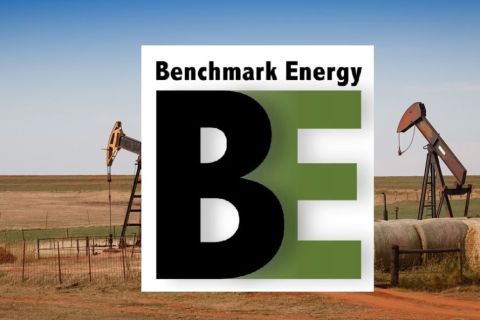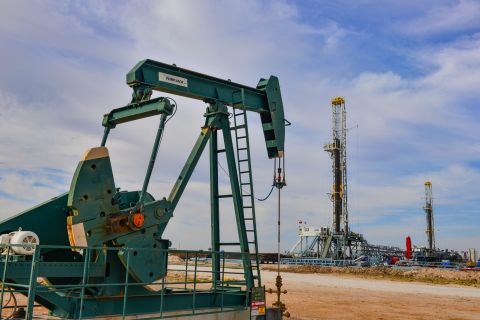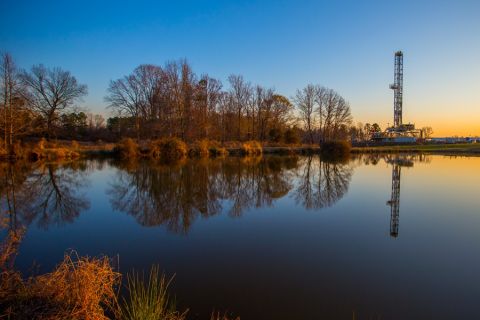It is a well-known and scientifically proven fact that oil and water don’t mix, but increasingly it’s clear they can coexist.
During the At the Pond: Best Practices in Water panel, experts discussed how the water market has evolved alongside the shale revolution and the benefits of recycling and reusing produced water at Hart Energy’s SUPER DUG conference in Fort Worth, Texas.
“Speaking globally, reuse is the way to go, whether it’s just reuse back into the process for recovery or whether it's reuse and diverting somewhere else,” Gerard Cooke, CEO of INOV8 Systems Ltd. told audience members during the panel. “We're hearing every day that water is a resource. It's not a waste [product], it’s a resource, and we need to use it.”
The reuse of produced water has long been a point of contention when it comes to water-handling, but the four panelists agreed that reuse is something that should be widely adopted within the water midstream industry.

Even with the positives that recycling produced water brings, many in the industry are still skeptical about reusing the water. John Durand, vice chairman and chief sustainability officer at XRI Holdings, attempted to allay those concerns. He said that nowadays there are fewer and fewer anomalies in produced water and operators are becoming more comfortable using water that fits within regulations.
Detailing the process that produced water goes through, Durand said that once custody of the water is transferred, “we'll take that same barrel of water back, we'll enter into a contract for [a] takeaway agreement to then treat that water, recycle it, give it back to any one of a number of operators and then keep that process going.”
This process leads to great economies of scale and cost efficiency, while also delivering from a quality standpoint. Durand said that each bit of water is analyzed thoroughly, which prevents it from “falling out of spec” and enables the water to be safely reused.
“It's great for the industry because every barrel that's reused is a barrel that's not taken from fresh” water sources, said Robert Rubey, Goodnight Midstream co-founder and chief commercial officer. “Every time that I can provide a barrel for reuse, I don't have to pay a chemical expense, I don't have to pay electricity to move it and I don't have to pay royalties either to put it through a pipe or put it down the hole.”
Despite recycling’s ability to cut water management companies’ costs, Rubey still lamented that the cheapest way to get rid of produced water is by putting it back downhole, which can result in a plethora of issues on its own, such as earthquakes.

“If you look at reuse in the Permian, it works because it's cheaper than the alternative. But people don't reuse in North Dakota because it's not cheaper,” Rubey said in response to a question about further evolutions in water-handling and how to combat issues that still remain. “People aren't going to [recycle produced water] out of the goodness of their hearts unless it's cheaper or unless they're forced to from a regulatory standpoint.”
But panelists offered some solutions to the dilemma Rubey posed.
Among the many innovations in water-handling that were discussed during the panel, artificial intelligence (AI) was by far the most notable. Duane Germenis, president of Intelligent Water Solutions, said AI could revolutionize the midstream water sector. Capturing data on various wells and feeding it into an AI system could enable the software to learn about different qualities of water. The AI would be able to handle and adapt to situations as they arise.
“I see that as a very big positive because so many things change in an instant,” Germenis said. “For instance, in the slugs that come through the pipelines, we don't know when they're coming but if we can detect it and say, ‘here comes the slug’ and understand that, then the data is going to be fairly accurate, which will benefit all the engineering support.”
Recommended Reading
EIA: Permian, Bakken Associated Gas Growth Pressures NatGas Producers
2024-04-18 - Near-record associated gas volumes from U.S. oil basins continue to put pressure on dry gas producers, which are curtailing output and cutting rigs.
Benchmark Closes Anadarko Deal, Hunts for More M&A
2024-04-17 - Benchmark Energy II closed a $145 million acquisition of western Anadarko Basin assets—and the company is hunting for more low-decline, mature assets to acquire.
‘Monster’ Gas: Aethon’s 16,000-foot Dive in Haynesville West
2024-04-09 - Aethon Energy’s COO described challenges in the far western Haynesville stepout, while other operators opened their books on the latest in the legacy Haynesville at Hart Energy’s DUG GAS+ Conference and Expo in Shreveport, Louisiana.
Mighty Midland Still Beckons Dealmakers
2024-04-05 - The Midland Basin is the center of U.S. oil drilling activity. But only those with the biggest balance sheets can afford to buy in the basin's core, following a historic consolidation trend.
Mesa III Reloads in Haynesville with Mineral, Royalty Acquisition
2024-04-03 - After Mesa II sold its Haynesville Shale portfolio to Franco-Nevada for $125 million late last year, Mesa Royalties III is jumping back into Louisiana and East Texas, as well as the Permian Basin.






